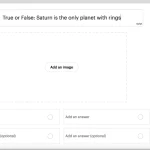Resource management can be a challenging task, so as a result, having a plan of classification and storage is essential. Physical resources are the most challenging to manage, especially when the equipment is expensive, bulky or delicate. Storage space is incredibly limited within most teaching establishments, this results in a limited amount of physical resources being possible. Digital resources are far more practical but introduce a selection of further challenges, such as data loss, the cost of data storage and file management and organisation.
There are some instances when physical storage is essential, such as storing resources that are not digital, realia, physical student exams and assessment submissions, etc. The most common physical storage methods include filling cabinets, box files, book cases, desk drawers and storage cupboards. I use a combination of all of these, I use the storage cupboard for large equipment, this physically could not be stored anywhere else and benefits from being lockable, as a result valuable equipment is stored securely. The negative is the amount of space a storage cupboard uses within the building, which would not be practical for all classes. I then use desk drawers to store smaller, normally paper based resources, such as exam papers, assignment briefs etc., these will be located for quick access. I make use of a book case for storing the large array of books that are required; these will be a range of industry reference books to specific course related material. Box files I use as an archiving method for storing paper based material that is no longer required on a regular basis. Finally, I use filling cabinets as a flexible storage method that is ideal for storing items that would not fit in desk drawers. Filling cabinets also have the added benefit of suspension files, allowing specific categorisation, labelling and grouping.
I store my resources in numerous locations to reduce the risk of data loss; these include my memory stick, teaching establishment staff documents, staff portal, student portal, Moodle and Google Docs. The primary storage location for resources is the teaching establishment staff documents; this is regularly backed up and in extreme cases can be accessed by my peers. The downside is the level of storage is limited to 10GB which can be limiting, especially due to teaching on a computing course, often requiring very large files. The next method of storage I use is Google Docs, I limit the file size I upload due to slow upload and download connection speeds. The third location is my memory stick which allows access to resources in the event I cannot access the internet or the teaching establishment staff documents, this is unlikely while at the teaching establishment, it can happen but is more common when working remotely with the risk of no internet connection.
I also make use of the staff portal for resources that I wish to share with colleagues but do not want to share with students yet. The student portal and Moodle is where I gradually upload all the resources, I drip feed the resources to prevent students becoming confused by complex topics that we have not covered yet.
The classification of resources is essential for finding the resource in the future; I store all my resources first by year, then level and finally unit. Each of the resources is named using a standard naming convention that includes the lecture number and a description of resource. This allows me to search, based on what I am covering or for the specific lecture number. At the start of each year, I create a new folder structure and fill the contents of the folders based on the completed scheme of work. This does create a large amount of duplication and can limit my delivery to a linear fashion.
Author Profile
-
My first experience of teaching was in 2016, when I was asked to
deliver a talk to a group of 16-year-olds on what it was like to start
your own business. I immediately knew I wanted to become more
involved in teaching but I didn’t know where to start as I had not
previously considered a career in education. A few weeks later I
agreed to teach a class of Chinese students from the Shanghai
Technical Institute of Electronics and Information, who had travelled
to the UK to learn English and Software Engineering, after that I was
hooked. Within the next few years, I taught hundreds of students of
many different nationalities, aged from 16 to 60, and from
levels 2 to 6. I focused my time teaching with Bath University and
Bath College for several more years until I felt a change was in order.
For the last few years, I have taught remotely with several private
training organisations, provided dedicated one to one coaching
sessions, provided consultancy on teaching and assessment practices
and written about my experiences as a teacher. I plan to continue
with my current activities for the foreseeable future but I’m always
open to new teaching experiences.




